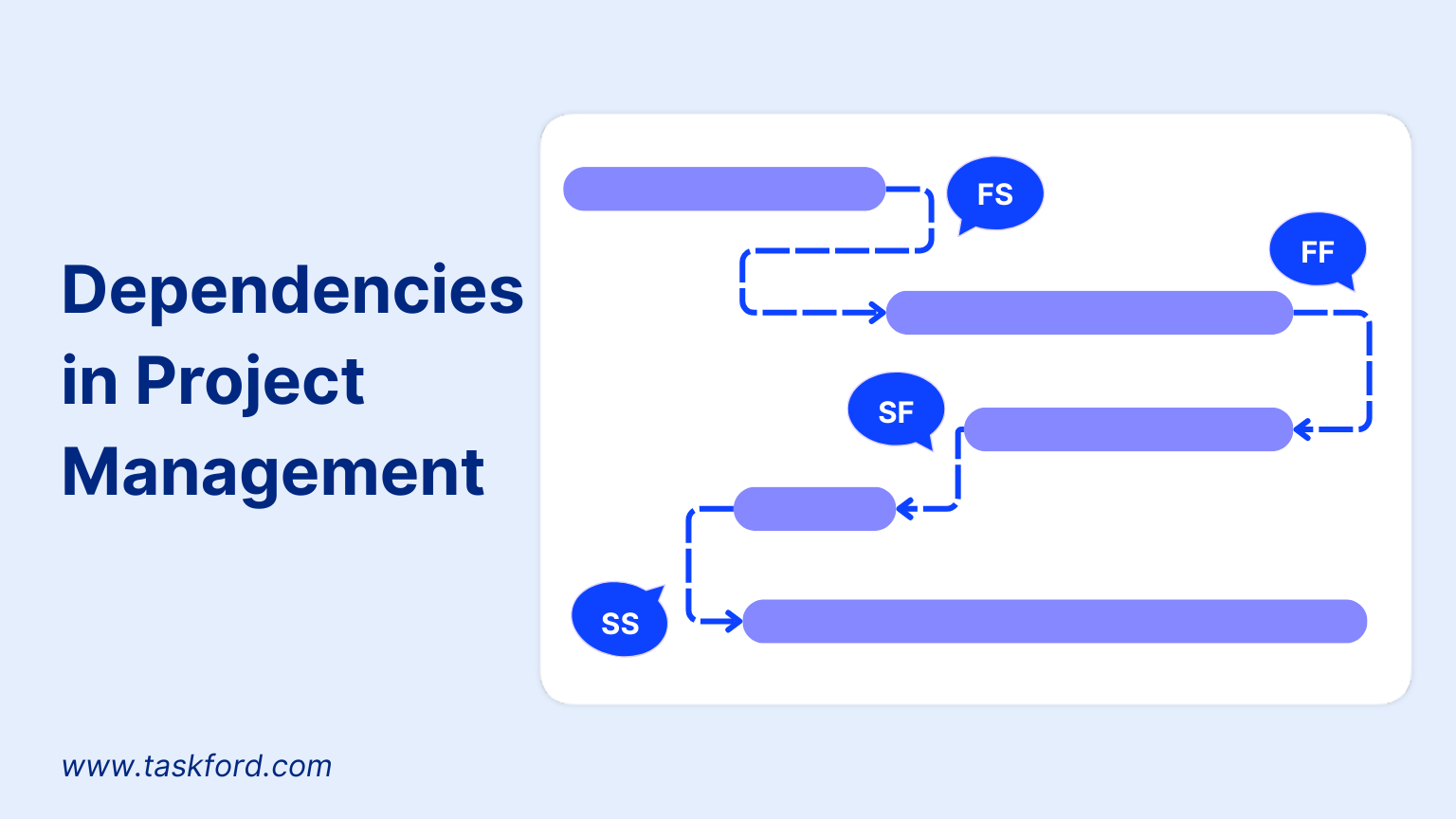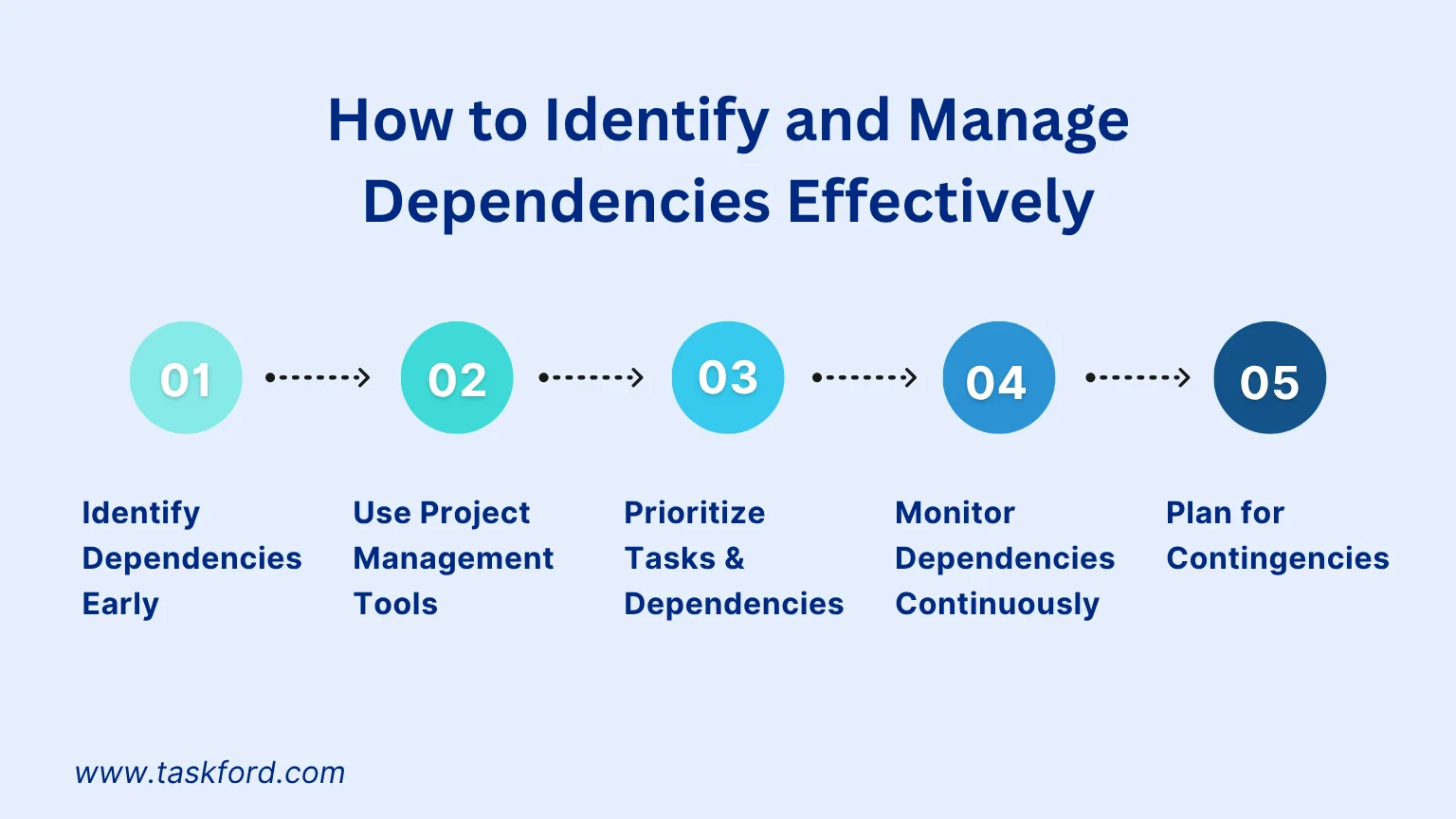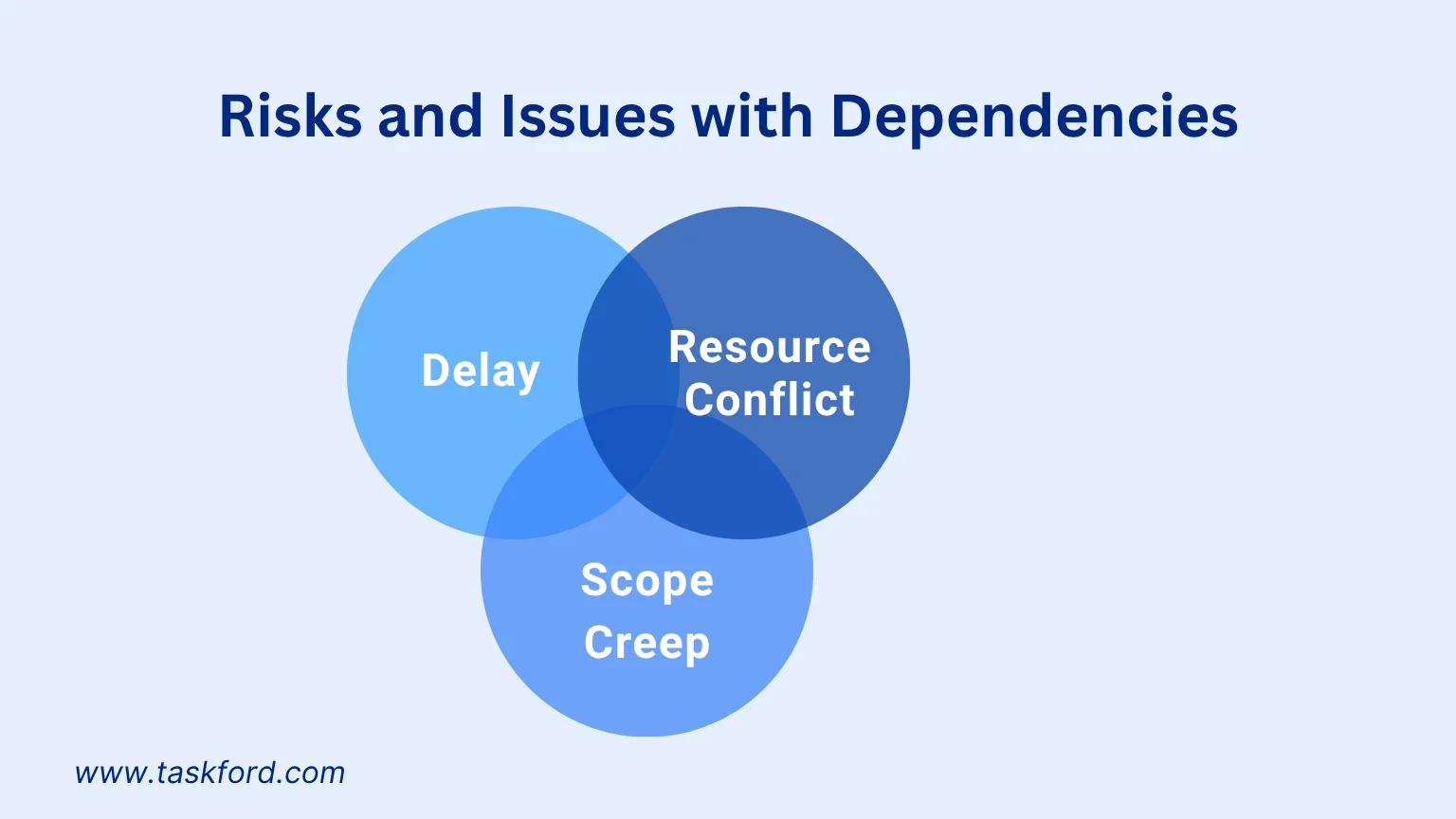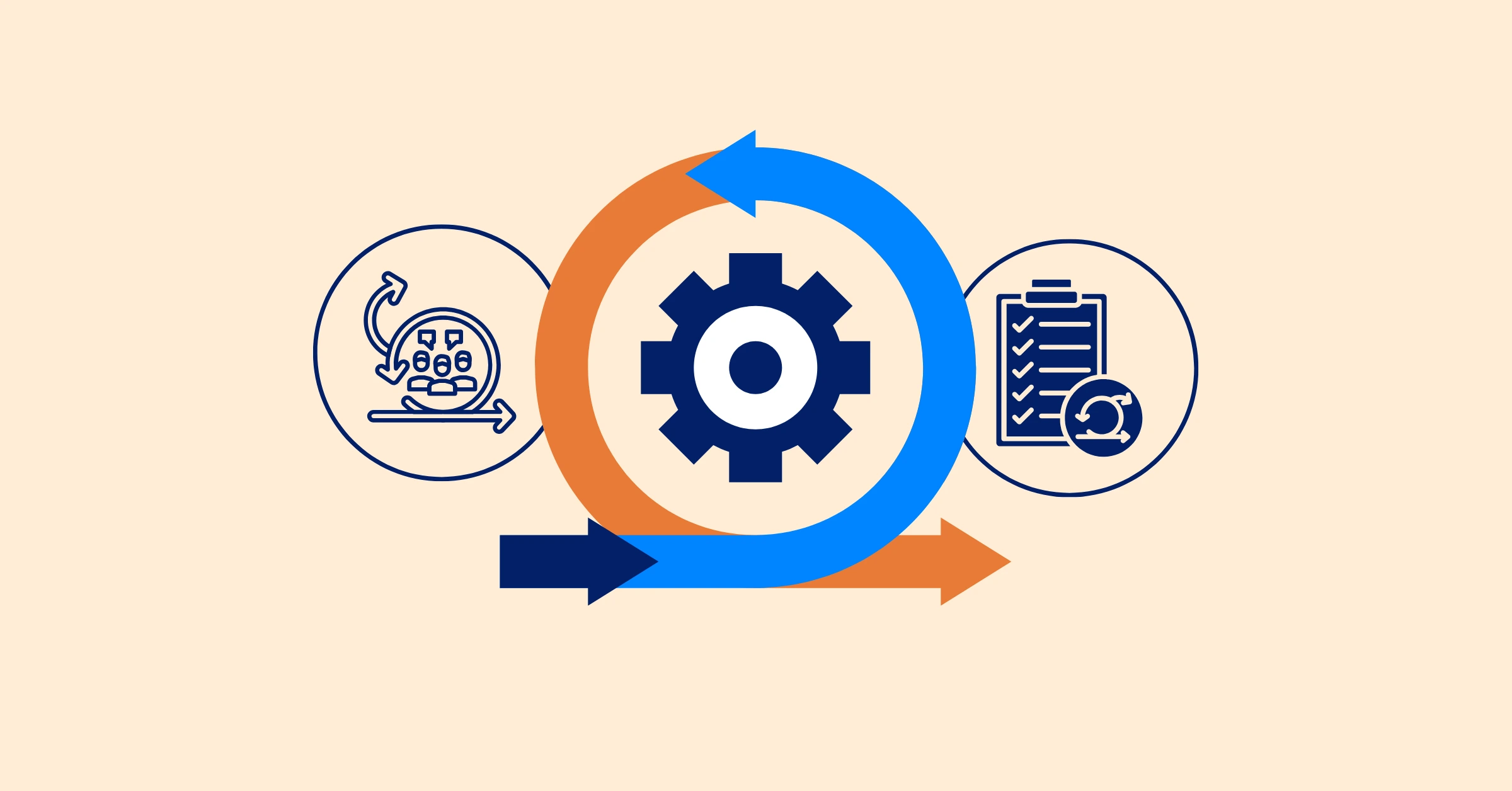Understanding Dependencies in Project Management with Examples
Dependencies in project management represent the relationships between tasks, helping to determine when to start and finish each one. Learn more through examples in this article.
Managing a project is a complex process that requires careful planning and coordination to achieve successful results. A key element for ensuring smooth project execution is understanding dependencies in project management. These dependencies define the order in which tasks must be completed and can greatly impact a project's timeline, resources, and overall success.
In this article, we will explore the concept of dependencies, cover the most common types with examples, and share strategies for managing them effectively to keep projects on schedule. If you are new to project management, check out the article What is Project Management to understand the concept before diving in.
What Are Dependencies in Project Management?
Dependencies in project management refer to a relationship between two tasks or activities where one task depends on the start or completion of another. These relationships dictate the order in which tasks must be executed, making them a cornerstone of project planning and scheduling. For example, you can’t pour a building’s foundation until the site is excavated. Understanding what dependencies in project management are and how they function helps project managers anticipate risks, allocate resources efficiently, and avoid delays.
Dependencies are often visualized in tools like Gantt charts, which map out task sequences and highlight dependencies clearly. If you’re unfamiliar with Gantt charts, this comprehensive guide on Gantt Chart 101 provides a detailed overview of how they work in project management.

Types of Dependencies in Project Management
In project management, there are four main types of dependencies that describe specific relationships between tasks:
- Finish-to-Start (FS): This is the most common type of dependency, where one task must be completed before the next one can begin. For example, the task "Build foundation" must be finished before "Build floor" can start.
- Start-to-Start (SS): In this dependency, a task cannot start until the previous task begins. For instance, the task "Software development" cannot start until "Project planning" has begun.
- Finish-to-Finish (FF): This dependency means that one task cannot be completed until another task is finished. For example, "Quality testing" cannot be completed until "Product development" is finished.
- Start-to-Finish (SF): This is the least common type of dependency, where one task cannot be finished until another task begins. For example, a new system cannot be deactivated until the old system starts to be replaced.
How to Identify and Manage Dependencies Effectively
Identifying and managing dependencies is crucial for keeping a project on track. Here are some steps to help you effectively manage dependencies:

1. Identify Dependencies Early
Start by breaking down the project into smaller tasks or milestones. Once you have a clear list of tasks, identify which ones depend on the completion of others. For example, a task like "Design website layout" may depend on "Define website requirements" being completed first.
2. Use Project Management Tools
Leverage project management tools (e.g., TaskFord, Microsoft Project, Trello, Asana), or dependency management tools to visualize and track task dependencies. These tools help you stay organized and adjust the project timeline when needed.
Additionally, take advantage of features like auto-scheduling and lead/lag time input in project management software. Auto-scheduling automatically adjusts task start and finish dates based on changes in dependencies, helping to keep the project timeline accurate. Inputting lead time (the amount of time a task can start before its predecessor finishes) or lag time (the delay between two dependent tasks) can further optimize your schedule, ensuring tasks are completed in the most efficient sequence and minimizing unnecessary delays.
3. Prioritize Tasks and Dependencies
Once dependencies are identified, prioritize tasks that are critical for project success. Focus on high-priority tasks that have a direct impact on the project's progress. By managing dependencies wisely, you can avoid bottlenecks and delays in the project schedule.
4. Monitor Dependencies Continuously
As the project progresses, keep an eye on dependencies to ensure there are no changes that might affect the schedule. If new tasks or dependencies emerge, update your plan accordingly. Regularly check if the dependencies are being met and adjust timelines or resources as necessary.
5. Plan for Contingencies
Sometimes, tasks get delayed, or dependencies are impacted by unforeseen factors. Having contingency plans in place for critical dependencies allows you to adapt quickly. This might involve reallocating resources or adjusting timelines to accommodate changes.
By identifying dependencies early, classifying them correctly, using the right tools, and continuously monitoring progress, you can manage project dependencies effectively. This approach ensures smoother project execution, better resource allocation, and ultimately, a more successful project outcome.
Risks and Issues with Dependencies in Project Management

Dependencies are crucial for organizing and structuring a project, but they can also introduce significant risks if not managed properly. Poorly handled dependencies may lead to:
- Delays: A delay in a predecessor task can push back dependent tasks, causing a ripple effect that impacts the entire project timeline.
- Resource Conflicts: Overlapping tasks, particularly with Start-to-Start (SS) or Finish-to-Finish (FF) dependencies, may compete for the same resources, creating bottlenecks.
- Scope Creep: Misunderstanding or mismanaging dependencies can result in unforeseen tasks or rework, ultimately expanding the project’s scope beyond its original plan.
To reduce these risks, project managers should:
- Map Dependencies Early: In the planning phase, use tools like Gantt charts or a dependency structure matrix to map out all task dependencies.
- Conduct Risk Analysis: Identify and assess critical dependencies that could disrupt the project and prepare contingency plans to address potential issues.
- Engage Stakeholders: Ensure that all team members and stakeholders are aware of and aligned with the dependency relationships to maintain smooth coordination.
Research from the Project Management Institute (PMI) shows that effective dependency management significantly increases project success rates. According to a PMI study, projects with clear and well-managed dependencies are 30% more likely to meet deadlines and stay within budget (PMI Pulse of the Profession, 2023).
Examples of Using Dependencies to Manage Projects Effectively
Imagine managing a complex software development project for a new customer relationship management (CRM) system. Managing dependencies effectively is key to keeping the project on track. With various teams handling front-end design, back-end development, and system integration, determining task priorities can be challenging. For example, the "Back-end database development" must be completed before "Integrating the CRM with external APIs" can begin. This Finish-to-Start (FS) dependency ensures the integration process proceeds smoothly without delays. Additionally, using Start-to-Start (SS) dependencies, tasks like "Designing user interfaces" can begin as soon as the "Planning and requirements gathering" phase starts, allowing front-end and back-end teams to work in parallel.
By establishing these task relationships, the project manager can ensure that the right tasks are completed in the right order, preventing unnecessary delays and bottlenecks. Dependencies help optimize resource allocation, keep teams focused on high-priority tasks, and ensure that work progresses in a logical sequence. Ultimately, managing dependencies in this way not only mitigates risks but also leads to a more efficient project flow, enabling timely delivery and a successful outcome.
Conclusion
In conclusion, understanding and managing dependencies in project management is crucial for the smooth execution of any project. By identifying dependencies early, classifying them correctly, and using the right tools and techniques, project managers can effectively plan and schedule tasks to avoid delays and optimize resource allocation. Whether dealing with construction, software development, or any other type of project, recognizing the relationships between tasks ensures that the project stays on track and moves forward in a logical and efficient manner. By prioritizing and monitoring dependencies, you not only reduce risks but also increase the likelihood of delivering the project on time and within budget, leading to a successful outcome.
Making work simpler,
smarter, and more connected
Join our waitlist and be notified first.

Related Blog
Subscribe for Expert Tips
Unlock expert insights and stay ahead with TaskFord. Sign up now to receive valuable tips, strategies, and updates directly in your inbox.






